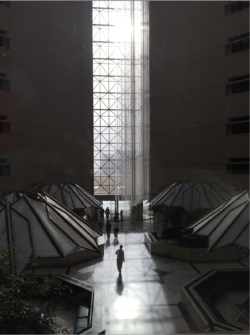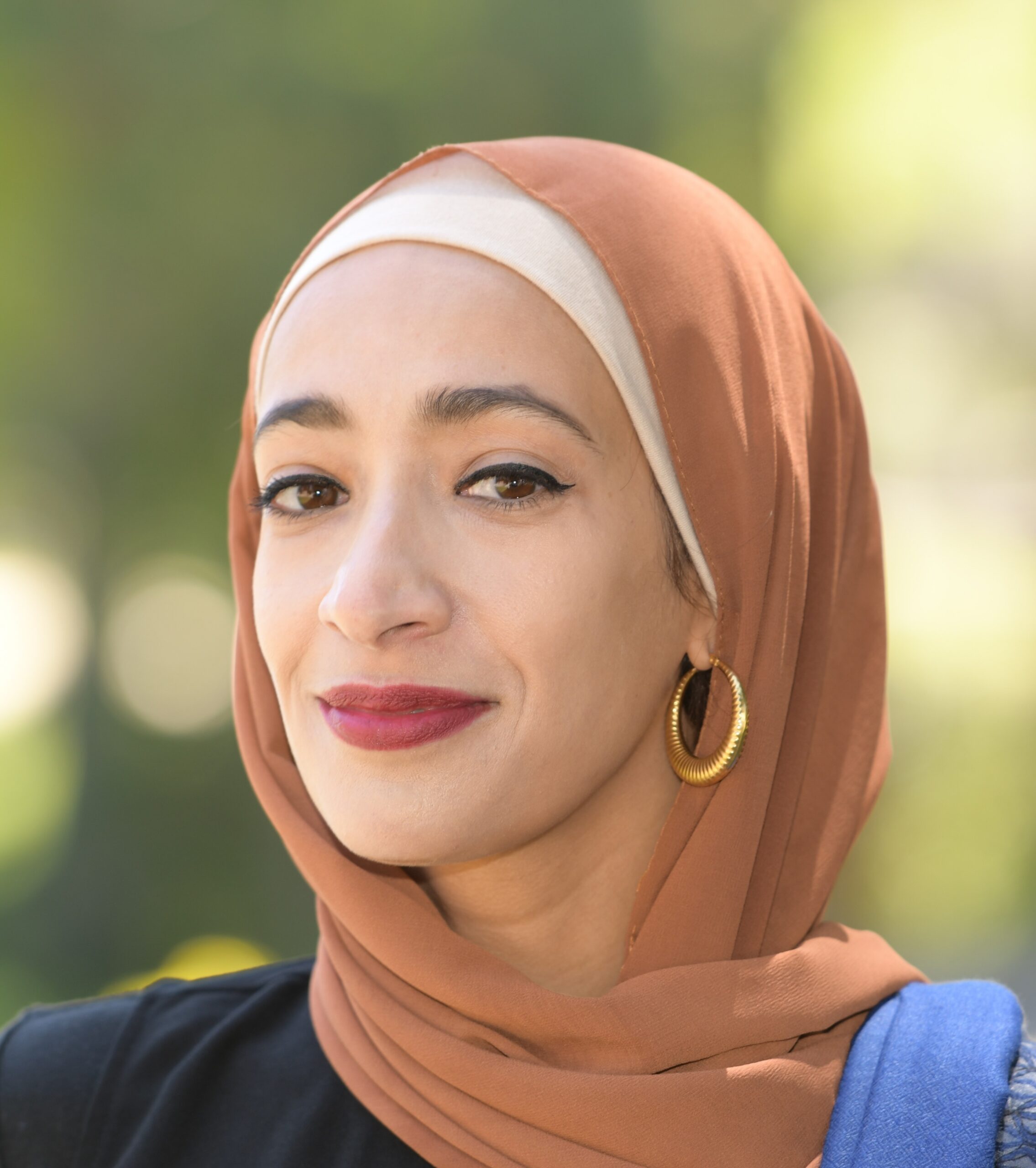
Youshaa Patel’s The Muslim Difference: Defining the Line Between Believers and Unbelievers from Early Islam to the Present is a refreshing genealogy of how Muslims distinguished themselves, following the Prophetic injunction to not imitate non-Muslims. Patel beautifully traces how Hadith-inspired scholars think about what it means to inhabit the Islamic tradition— and the ways this reflection evolved over time. What emerges over the course of the book is the historical texture of how Muslim scholars understood “Muslimness” and a deft interrogation of the momentum of their inquiries. Patel delves into the anthropologies at stake for Muslim scholars, as well as their anxieties regarding the porosity of the Muslim soul and its impact on the communal body during times of crisis. Focusing on how styles of difference evolved over time—accentuating, waning, and becoming obsolete in times of stability—he debunks the often-projected narrative about a clash between eastern and western civilizations. Patel’s lament of the potential ossification emanating from the entrenchment of small differences has led me to revisit the ways the interlocutors I engage with in my own work point to the alterity that already exists in the ethical cultivation of the self.
As an anthropologist, I commend the author for engaging an anthropology of Muslim difference through the scholarly commentaries about what imitation entails and how it elicited an anti-imitation corpus bearing on Muslim embodied practices. Patel digs through textual archives to showcase how aspects of difference, particularly small differences, are thought of and used over history to foster communal cohesion, solidarity, pride, and belonging. In The Muslim Difference, Patel examines how practices such as comingling in cafes and adorning top hats and beards are debated amongst scholars as they grapple with the cultivation of one’s self/soul, the performance of one’s identity/style, and one’s affinity toward the Muslim community and others. Within Patel’s meticulous examination of the power of mimesis lies a lesson regarding alterity. The latter, he shows, grows over time and begins with small differences (not big theological ones) and concerns the question of alienation. In this post, I suggest that the question of difference does not necessarily lead to what the author describes as the subjugation of the other to the self, but also could open up a gap, a site of potential encounter akin to the very space of potential transformation that internal cultivation of the self renders, which Patel recommends.
As Patel argues, the idea of religious difference rose alongside Muslim empire and as part of its ethos. As such, Muslim scholarly understandings of religious difference moved from a Qur’anic egalitarianism to a stronger formalization of the laws of the empire. Patel cites Muhammad Asad’s caution about tashabbuh (imitation) as a weak form of pedagogy that does not develop into a full agentive autonomy, a warning that I would describe as a caution against the imitated other (2–3). As such, one may approach the anxieties of Muslim scholars—from Ghazzi to Ibn Taymiyyah and Mohammed Abduh to Muhammad Asad—as tools for thinking about how the radical otherness of what is absent and its looming pedagogical form and discipline in imitation is already a form of alterity. Alterity is not taken for granted in practices of cultivating the self in Islam. The question of how and when to be different is actually preceded by another question that one poses to one’s self/soul and in relation to the Islamic tradition and the Muslim community (umma) about the potential paths (215). This allows us to better understand how Muhammad Asad shifts his stance in the “The Business of Imitation,” cited by Patel, on the imitation hadith, away from admonishing imitation of the west toward a search for those truly worthy of emulation (215). In the epilogue, Patel asks us to heed Asad’s advice and consider a move away from fixating on external expressions of difference (non-/imitation as cultural orientation) toward a focus on cultivating the spiritual self (non-/imitation as self-cultivation) from within. It is with this in mind that I consider how my interlocutors linked self-cultivation to meditations of Muslim difference.
‘Afiya and Muslim Difference
Some of these questions have been critical in my own fieldwork, which examines how Muslim physicians and patients come to understand what aspects of the Islamic tradition, small or otherwise, are needed to secure physical, psychic, and spiritual well-being (‘afiya) within the spaces of the clinic and the hospital. My work situates this effort in a time of crisis and collectivity in ruins, which mirrors the contexts of the scholars whom Patel examines. Though much biomedicine being practiced in the Islamic World today resembles that occurring in some state-of-the-art facilities in the US and Europe, the gestures, supplications, recitations, and general orientations toward treatment and prescription in Muslim medical sites invoke Muslim difference. My interlocutors both revere the importance of imitation of the west as a form of Islamic self-cultivation but also emphasize the importance of Muslim difference. From physicians supplicating for patients’ ‘afiya and God’s aid to drive a cure, to physicians claiming to be mere messengers of evidence they have been granted by God (as prophets do—and opposing the figure of a magician who promises a cure), practices of small difference evoke a Muslim cosmology that bends modern medical epistemology. This attention to the psycho-spiritual realm of individual and communal healing marks Muslim differences.
Although many of the questions I receive about my fieldwork center on how different traditions of Islam are expressed and negotiated between my interlocutors (regarding the proper relationship between religion and medicine, medicine and magic, justice and oppression, communal obligation and state mandates, and more), the concerns that lie behind such questions revolve around how to secure both individual and communal ‘afiya. Communal ‘afiya in particular concerns the cultivation of ethico-religious virtues in medical practice, rather than the consensus of global medical expertise and the proper means to understand illness. In turn, my interlocutors look to reform (islah) medicine by cultivating an ethico-medical and religious practice that focuses on affinity and patient-physician relationality, and to rethink contemporary methods of scientific inquiry. Therefore, these marks of Muslim difference are both external and internal. In turn, physicians enacting these small differences reformulate epistemologies, infuse bioethics with an Islamic ethico-religious register, introduce ontological realities such as the domain of the ghayb (unseen/unknown) into the clinical space, and cultivate their intuition (hads).
Reading the historical trajectory of the imitation hadith and its anthropological implications alongside concerns raised by my interlocutors suggests that the alterity of the other, manifested in small differences such as dress and beard length, also refracts onto the alterity between self and soul. By examining the incremental choices a person makes every day and their impact on their comportment and orientation in community with others, we can see that the relationship between the self and its embodied practices and unconscious drives are also a site of alterity. A relationship between the self and the soul is one that a Muslim returns to again and again while attending to their oscillating nafs (self/soul). They do so in order to maintain their vitality and potentiality so that they can attend to shifting conditions and work toward a contented self/soul (nafs radiya). The unknowability and oscillation of the soul imbues individuals with a radical otherness or alterity. This otherness can be extended to others not simply to create distinctions but also to relate to the gap that exists by virtue of difference. In the gap between self and soul, and self and other, there is a field of possible exchange, recognition, and innovation. Therefore, small differences do not necessarily subjugate the other to the self, but instead offer a field of exchange between Muslims and others marked by the very subjugation of the self to God in the internal work of the soul/self. As my interlocutors look from within after parsing out the field of differences in Muslim approaches to individual and communal ‘afiya, they turn to reform, to innovation, and to repair.
Innovation as Difference
Innovation is precisely what Claude Levi-Strauss claims is a result of difference. In Tristes Tropiques, Levi-Strauss mourns what we may consider global mimicry, which has resulted in a monoculture and reconstruction of the world as the mirror of the West (38). It is precisely these pivotal questions regarding difference that Patel generates for his readers in a time where difference is both celebrated but also seen as a threat to tolerance and national unity. For the umma, small differences arise vis-à-vis other religious communities due to historical encounters and contingencies. Yet, as Muhammad Asad is quoted as holding in the introduction to The Muslim Difference, much of this stems from a recognition of the internal coherence of the tradition and community. Internal coherence continues to shape how differently the community sees itself and the ways difference pushes it to continually renew and reform.

